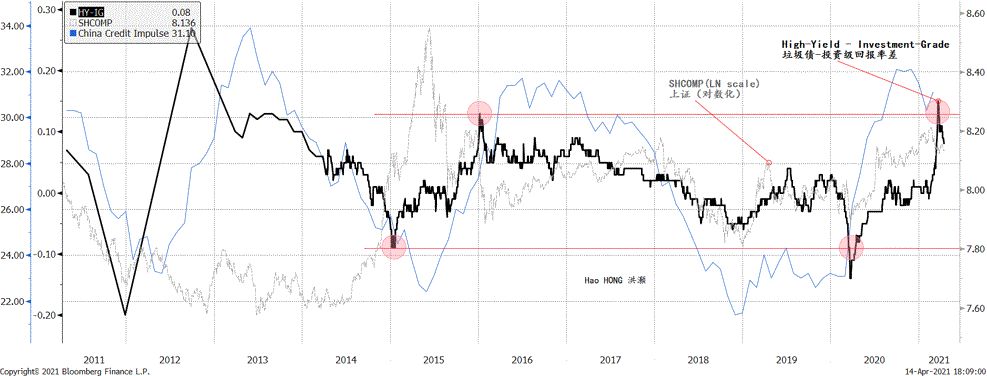
这是我们2021年4月15日的报告《
洪灝 | 为什么经济跑赢,股票跑输?
》的英文版。感谢阅读。请点击下方“
阅读原文
”,或按以下网址下载我们的报告PDF完整版(共10页):
http://researchreport.bocomgroup.com/Strategy-210415e.pdf
----------------------
Recently, the default risk of some high-profile SOEs in China’s credit market has become the focus with extended media coverage. While some of these SOEs, such as Huarong, are systemically important companies, the fact that they are systemically important and that they are majority government-owned implies that the default/bankruptcy risk is being monitored. After all, one cannot default on one’s parents. And the US did bail out its entire banking industry in 2008. The significant mark-down on these SOEs’ bonds is reflecting the latent risk that they are confronting.
Further, China’s credit bonds are about 34% of the bond market. The entities issuing enterprise and corporate bonds are mostly central or local government SOEs, representing about 30% of the bond market that is worth ~RMB120trn. The majority of these bonds have been rated “A” or better, given their government connection and hence the perception of “guaranteed payment”. It is understandable that such perception of “riskless” is now challenged given the circumstances.
Yet, it is difficult to fathom these bonds defaulting on a massive scale. The fact that some of the highly-rated SOE bonds are running into problems is a reflection of how the credit rating system has been blindly reflecting the principle of “guaranteed payment”, rather than the varying credit risks. Even if these bonds are of different quality, there must be some good stuff in there. After all, owing money is frowned upon in Chinese culture.
Our data analysis shows that there are now <2% of total number of bonds outstanding and < 1% of total principal outstanding that are in default. The principal of default bonds has risen significantly since the pandemic, but we must point out that they are a small part of the credit securities market, and even a smaller part of the overall China bond market. Further, our calculation shows that the EBITDA/interest cover ratio of the SOEs is 4-6 times on average, and should be more than enough to warrant against massive default risk.
The potential contagion risk, or the risk that default would be widespread, is more about perception than real. We would argue that, should the scale of default rise further from here, it should be a welcomed change to China’s credit market. Finally, the market would break free from the “guaranteed payment” system. One simply cannot reform without taking some risk.
The return spread of high-yield vs. investment-grade bonds is now at one of its highest levels of the past decade, and appears to be rolling over. It hints at the market’s waning risk appetite. When the spread was at this level historically, Chinese stocks rose when the high-yield performance didn’t worsen further and risk appetite held steady, as in 2017, or fell when the high-yield tumbled, as in 2018 and early 2020. Given the milieu, we believe the high-yield will be under pressure in the near future, and will still be a drag on stocks that otherwise would have better reflected the economic recovery.
Figure: Return spread is rolling over from its highest levels of the past decade; it hints at the market's waning risk appetite
















